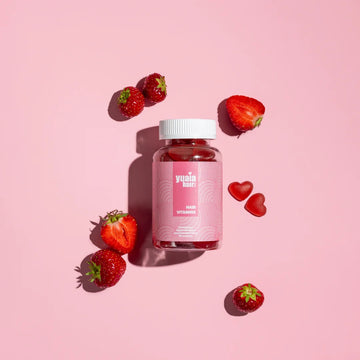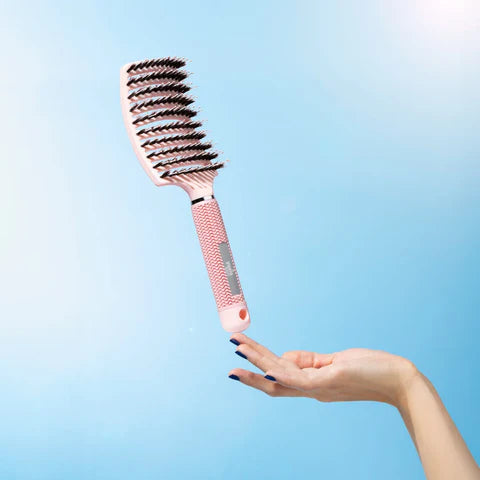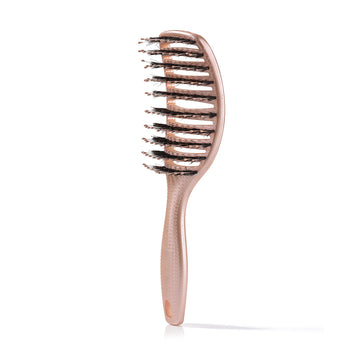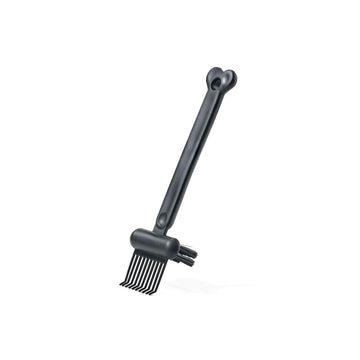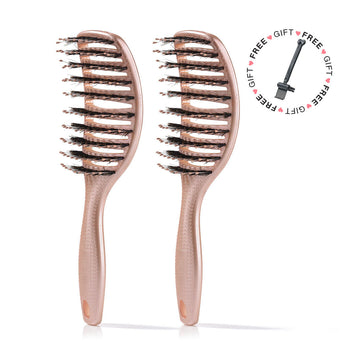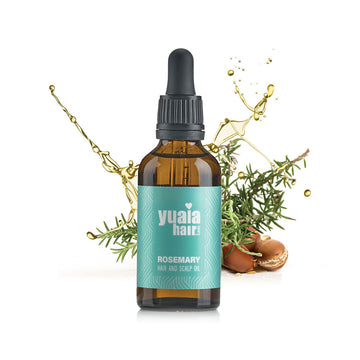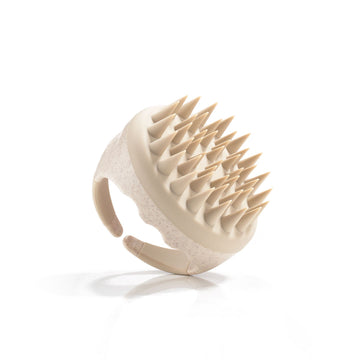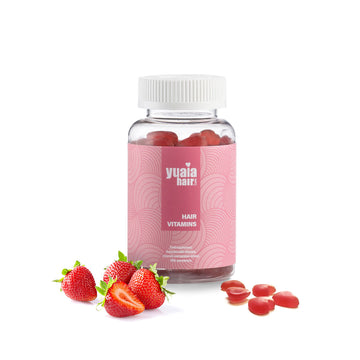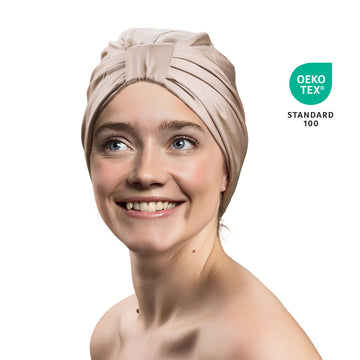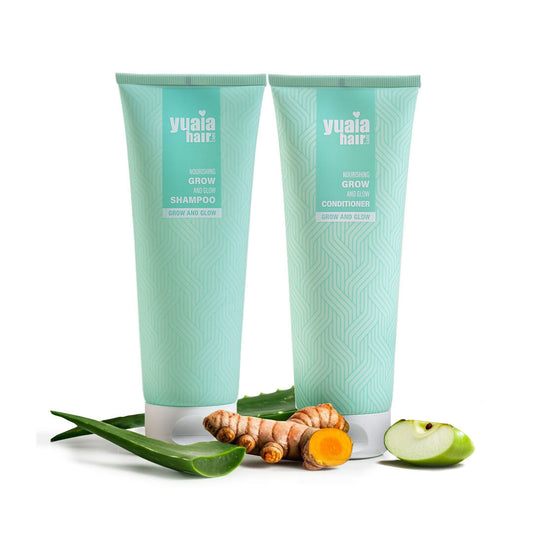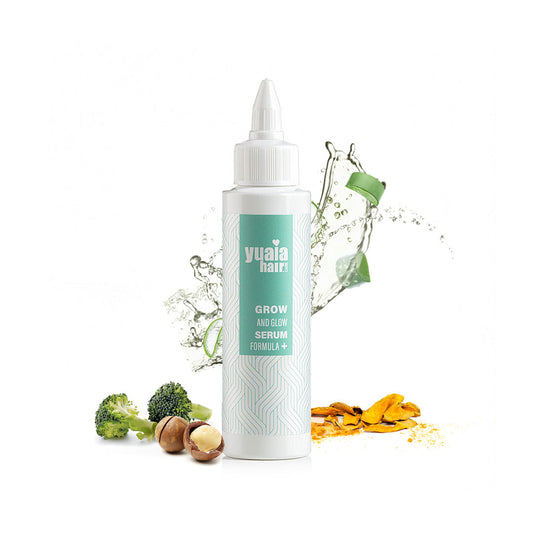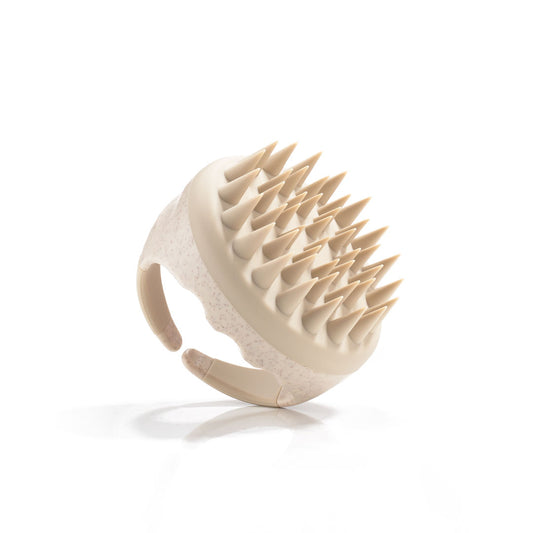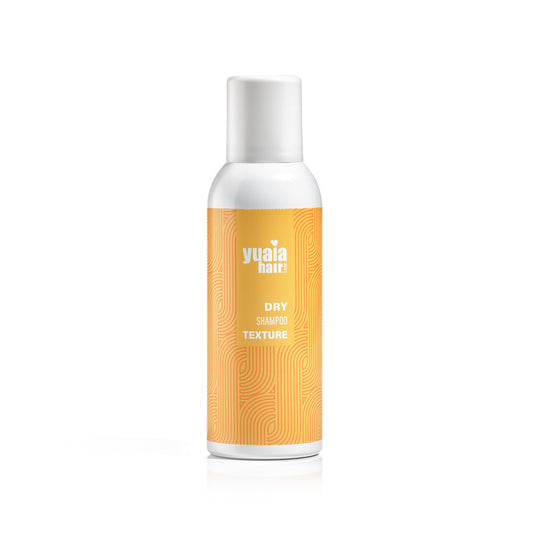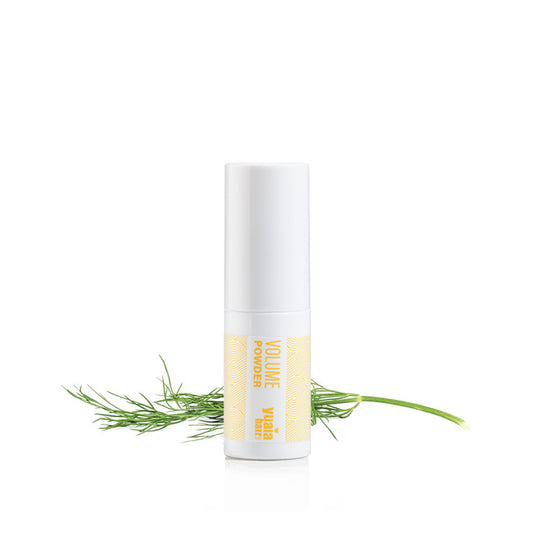
Common reasons for fine or thin hair
Fine or thin hair is often genetic, but can also result from stress, hormonal changes, nutrient deficiencies, or frequent styling. These factors can weaken the hair and reduce volume. Identifying the underlying cause helps guide steps toward improving overall hair strength and fullness.
Genetic factors
Genetics play a major role in determining your hair’s thickness, density, and growth pattern. The number of follicles and the diameter of each strand are inherited from your parents. If fine or thin hair runs in your family, you’re likely to experience the same. Genetics also influence hair changes over time.
Hormonal influences
Hormonal changes can significantly impact hair growth, texture, and density. Shifts from pregnancy, menopause, or thyroid issues may cause thinning or increased shedding as follicles enter resting phases faster. Estrogen supports fullness, explaining thicker hair during pregnancy and shedding afterward. Adapting your routine helps maintain balance and healthy growth.
Styling and mechanical stress
Frequent use of heat tools, chemical treatments, coloring, or tight hairstyles can place constant pressure on the hair strands and follicles. Over time, this weakens the hair’s structure, making it more prone to breakage and appear thinner.
To maintain healthy hair, it’s wise to limit heat use, apply protective products before styling, and vary your hairstyles to reduce tension.
Regular breaks from heat and physical strain give the hair a chance to recover and maintain its natural strength, elasticity, and fullness – for healthier, shinier, and more manageable hair in the long run.
Environmental impact
External factors like UV exposure, air pollution, and scalp buildup can reduce oxygen flow to the follicles and cause irritation. Recognizing whether your hair concerns stem from internal or external factors makes it easier to adjust your care routine for healthier, fuller hair.
Does hair get finer or thinner with age?
As we age, hair naturally becomes finer and less dense. Hair follicles may shrink over time, producing thinner hair, while the growth cycle shortens, causing hair to shed sooner and regrow more slowly. Some follicles eventually stop producing new hairs, leading to reduced overall volume. Hormonal changes, such as decreased estrogen during menopause, can accelerate this process, making hair appear more fragile and sparse.
Although these changes are part of aging, maintaining good scalp health, balanced nutrition, and a consistent hair care routine can help slow thinning and support fuller, healthier-looking hair for longer.
How to care for fine and thin hair for natural volume
Caring for fine or thin hair means using gentle methods that preserve volume. Choose lightweight shampoos and avoid heavy products or excessive heat styling. Regular cleansing to prevent buildup and mindful care techniques can help your hair look naturally fuller, healthier, and more voluminous over time.

Choose lightweight products
Caring for fine or thin hair is about maintaining volume while still providing enough nourishment for strength and flexibility. The goal is to add moisture without creating heaviness that flattens the hair.
Opt for lightweight, volumizing shampoos and conditioners that gently cleanse while preserving the natural oils that keep the scalp balanced. Focus conditioner only on the mid-lengths and ends to prevent the roots from becoming limp. Avoid thick creams, heavy oils, and silicones, that can coat the hair, leading to buildup and a weighed-down appearance. Instead, choose water-based or spray formulations that deliver hydration in a light form.
Leave-in sprays and lightweight serums are ideal for adding smoothness and shine without compromising movement or body. Regular use of these products helps fine or thin hair feel soft, manageable, and voluminous while supporting a healthy, balanced look that lasts throughout the day.
Encourage healthy growth
Regular scalp massages help boost circulation and support natural growth, which can make hair look thicker over time. When styling, choose lightweight products such as mousse, root-lifting sprays, or texturizing mists to add body. Always apply a heat-protectant spray before blow-drying or using heat tools to reduce the risk of damage and breakage. For extra lift, blow-dry upside down or use a round brush at the roots.
Maintain long-term balance
Use a gentle clarifying shampoo once a week to remove residue from styling products, oils, and environmental buildup. This helps keep the scalp healthy and ensures that volumizing products remain effective. With consistent, gentle care, fine and thin hair can look naturally fuller, softer, and more resilient over time.
Styling and haircuts for a fuller look
Finding the right haircut and styling techniques can make a big difference in how full and voluminous your hair appears. With the right approach, you can enhance movement, create lift at the roots, and give even fine or thinning hair a more balanced, fuller shape.
Haircuts that enhance thickness
Choosing the right haircut can make a big difference in how fine or thin hair appears. A blunt cut is one of the most effective options for creating the illusion of thickness, as it leaves the ends looking dense and solid. Soft, minimal layers can add movement, but they should be placed carefully to avoid removing too much weight. Very long or heavily layered styles tend to make the hair appear flat and lifeless by reducing volume at the ends.
Ideal lengths for volume
Short to medium hair lengths are often the most flattering when aiming for a fuller silhouette. These lengths help the hair maintain its shape and add more movement, creating a naturally voluminous look.
Styling techniques for lift and texture
When styling, focus on techniques that create lift and movement. Volumizing products like root-lifting sprays, lightweight mousse, dry shampoo, or texturizing mists can add grip and body. Blow-drying the hair upside down or using a round brush to lift at the roots while directing airflow upward helps boost volume and create natural flow.
Finishing touches for fullness
To complete the look, use a flexible, lightweight hairspray or volumizing powder at the crown. This helps lock in lift and texture without making the hair stiff. With these simple adjustments, even fine hair can look thicker, fuller, and more dynamic.
When to consider professional or medical treatments
If you’ve noticed a significant or rapid decrease in density, it might be time to consult a dermatologist or trichologist. Treatments such as minoxidil, microneedling, or platelet-rich plasma (PRP) can help promote regrowth and improve hair thickness. Always discuss these options with a professional before starting.
Hair myths
There are many misconceptions about hair.
A common one is that thin hair is the same as fine hair — that’s false. Fine hair refers to the diameter of each strand, while thin hair describes the overall density. Another myth is that you can permanently turn fine hair into coarse hair. You can’t, but nutrient- and protein-rich products can help strengthen it and improve its resilience. A third myth is that brushing increases hair growth. In reality, brushing only helps distribute natural oils for a healthier shine; it doesn’t directly stimulate growth.
Bringing out the best in fine or thin hair
Fine and thin hair both benefit from a thoughtful approach to care. Knowing which category your hair falls into helps you choose the right products and routines for the best results.
Focus on lightweight, volumizing formulas that add lift without heaviness, and use gentle styling techniques to protect the hair from damage. Regular scalp care, balanced moisture, and mindful product use can make hair appear fuller and healthier over time. If you’re unsure of your hair type, pay attention to its texture, density, and how it reacts to products - this awareness is key to achieving stronger, naturally vibrant hair.
Frequently Asked Questions
What is the difference between fine and thin hair?
Fine hair refers to the diameter of each individual strand, while thin hair describes the overall density or number of hair strands on your scalp. You can have fine hair that is dense or coarse hair that is thin.
Can you make fine or thin hair thicker?
While you cannot change your natural hair diameter or density, you can improve the appearance of thickness by using volumizing products, getting the right haircut, and maintaining a healthy scalp. Treatments and proper care can help hair look fuller and healthier.
What are the best products for fine or thin hair?
Lightweight, volumizing shampoos and conditioners, leave-in sprays, and root-lifting products are ideal for fine or thin hair. Avoid heavy creams and oils that can weigh hair down.
How can I style my hair to make it look fuller?
Opt for blunt cuts or minimal layers, use volumizing products, blow-dry upside down, and use a round brush at the roots. Short to medium lengths often help create a fuller look.
Does hair naturally get thinner with age?
Yes, hair often becomes finer and less dense with age due to shrinking follicles and hormonal changes. Maintaining scalp health and using the right products can help slow this process and support fuller-looking hair.
 2-4 day UK delivery
2-4 day UK delivery
 25.000+ satisfied customers
25.000+ satisfied customers
 Satisfaction Guarantee
Satisfaction Guarantee

